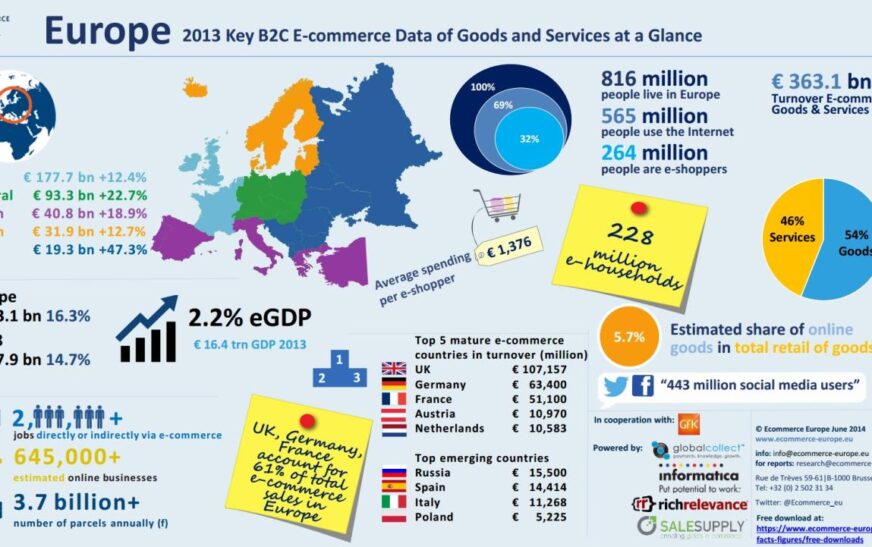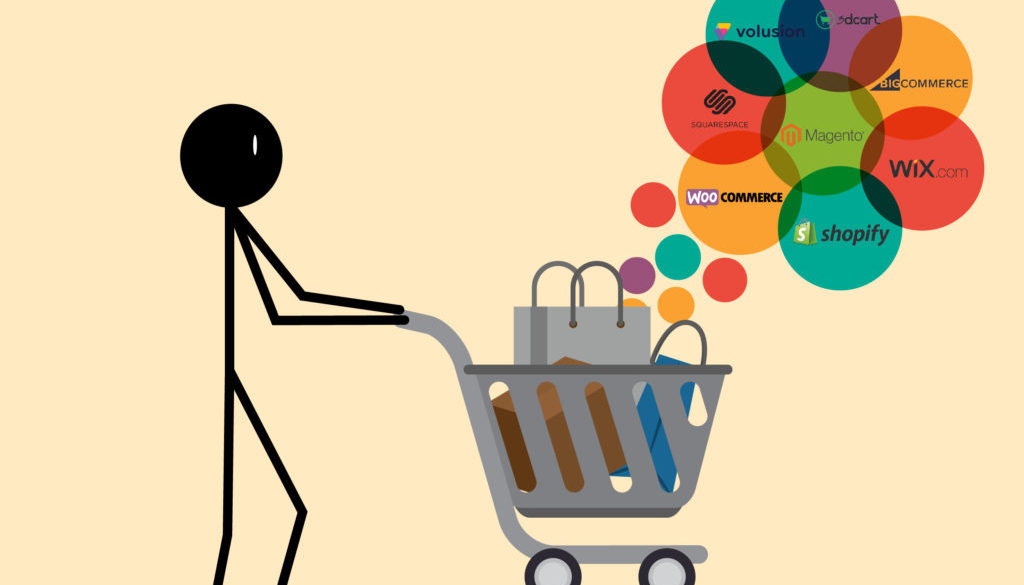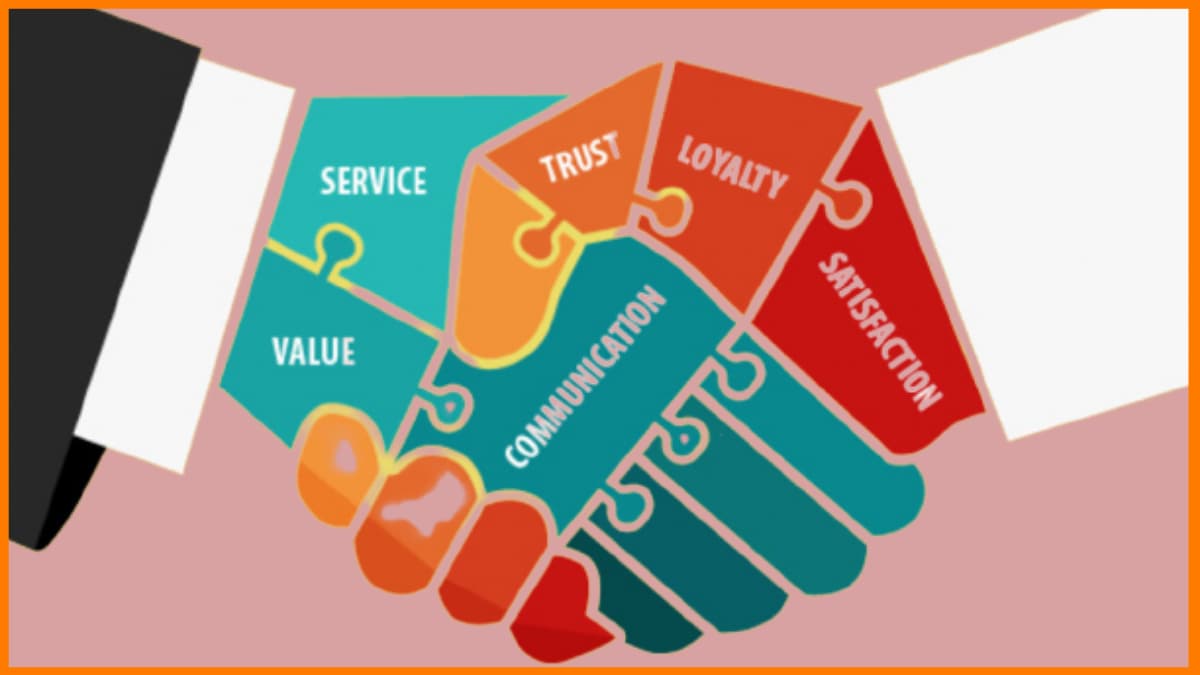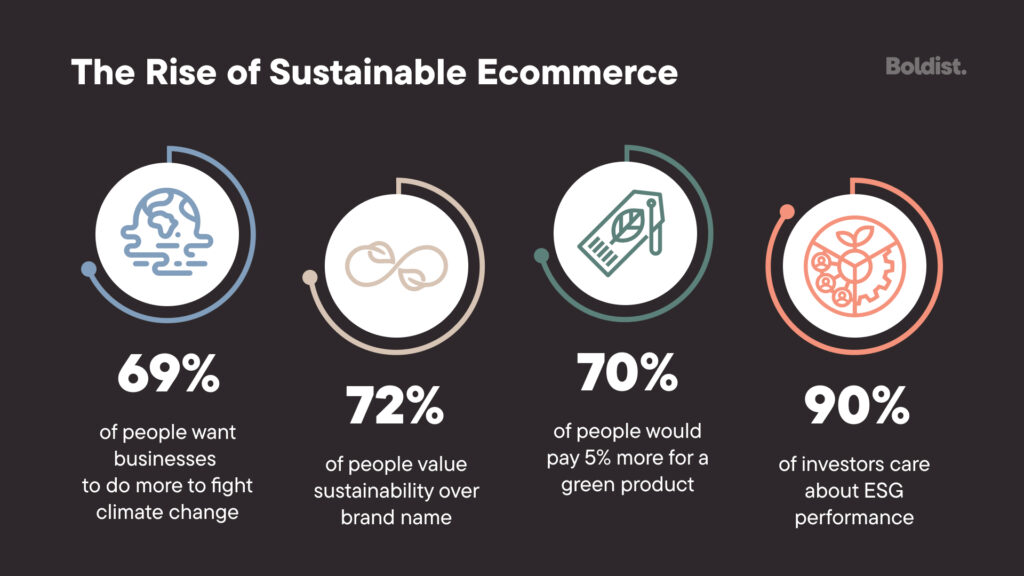Exploring the impact of Europe’s booming ecommerce scene on small sellers opens up a world of opportunities and challenges. From the vibrant marketplace to the innovative technologies shaping the industry, this discussion delves into the essential aspects that every small seller should be aware of.
As we navigate through the current landscape of ecommerce in Europe, key factors driving growth, and successful examples of small sellers, a deeper understanding emerges of the dynamic environment awaiting those looking to thrive in this competitive market.
What Europe’s Ecommerce Growth Means for Small Sellers
The current landscape of ecommerce in Europe is experiencing significant growth, with more consumers turning to online shopping for convenience and a wider selection of products. This shift has created a thriving marketplace for businesses of all sizes to reach a larger audience and expand their reach beyond traditional brick-and-mortar stores.
Key Factors Driving Ecommerce Growth in Europe
- The increasing use of mobile devices for shopping, providing consumers with easy access to online stores at any time.
- The rise of cross-border ecommerce, allowing European consumers to purchase products from other countries effortlessly.
- The expansion of online marketplaces and platforms, offering small sellers the opportunity to showcase their products to a global audience.
- The growing popularity of online payment methods, making transactions more secure and convenient for both buyers and sellers.
Impact on Small Sellers
The growth of ecommerce in Europe has opened up new possibilities for small sellers to compete in the market and reach customers they wouldn't have access to otherwise. Small sellers can now establish a strong online presence, build customer loyalty, and increase sales without the need for a physical storefront.
Examples of Successful Small Sellers in European Ecommerce
- MyLittleBox:A French subscription box service that offers beauty and lifestyle products, catering to a niche market and building a loyal customer base through online sales.
- Made.com:A British furniture retailer that started as an online-only store, disrupting the furniture industry by offering high-quality, affordable products directly to consumers.
- ASOS:A UK-based online fashion retailer that started small and grew into a global powerhouse by focusing on trendy, affordable clothing and embracing digital marketing strategies.
Challenges Faced by Small Sellers in Europe
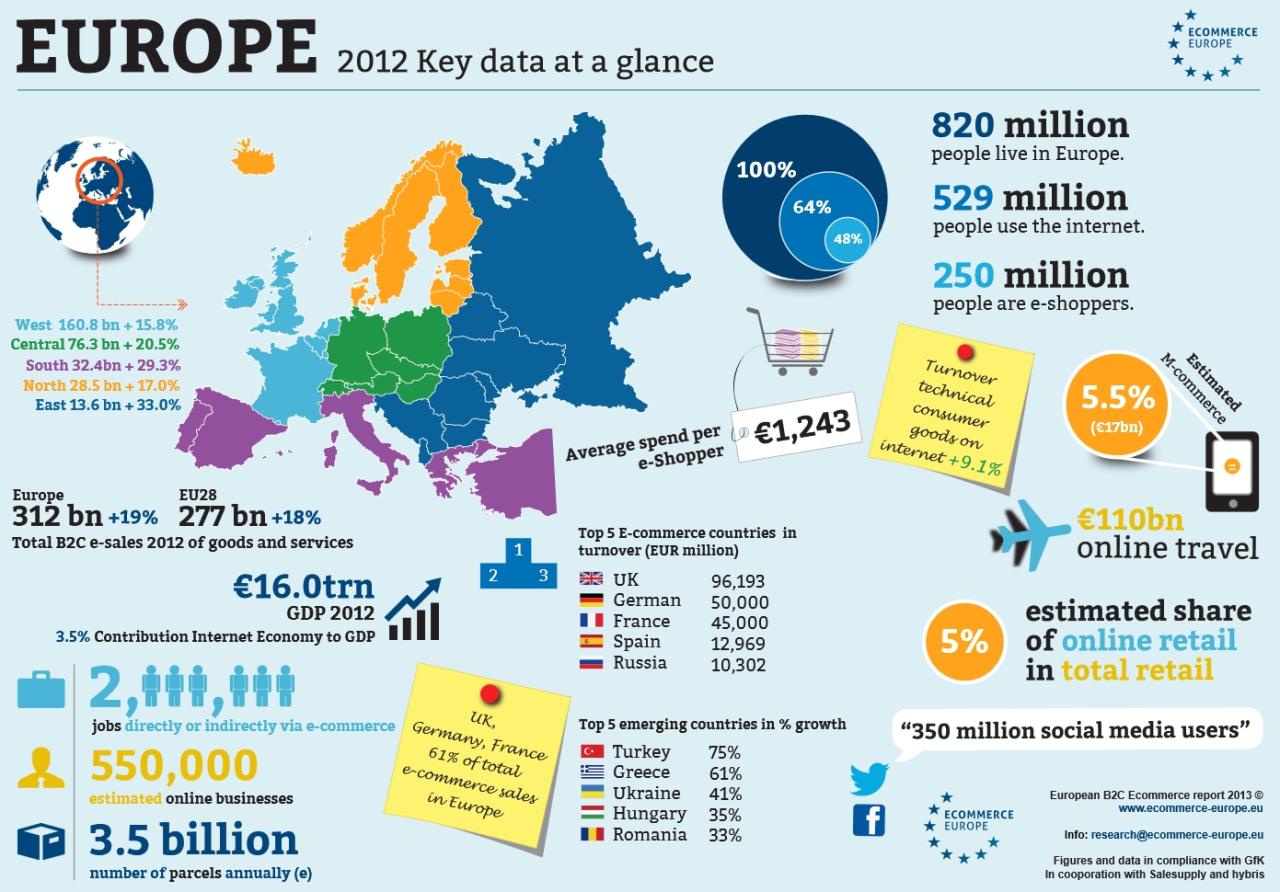
Small sellers in Europe face a myriad of challenges in the competitive ecommerce landscape. From intense competition to regulatory complexities, these obstacles can hinder the growth and success of small businesses operating in this region.
Common Challenges for Small Sellers
- Intense Competition: With the rise of ecommerce giants and an influx of new online stores, small sellers often struggle to stand out and attract customers.
- Regulatory Compliance: Navigating the complex web of regulations in different European countries can be daunting for small sellers, leading to potential legal issues.
- Logistics and Shipping Costs: Small sellers may face difficulties in managing shipping logistics efficiently and cost-effectively, impacting customer satisfaction.
- Limited Resources: Small businesses often have limited budgets and manpower, making it challenging to invest in marketing, technology, and customer service.
Comparison with Other Regions
- Europe vs. North America: While North America has a larger ecommerce market, small sellers in Europe face more regulatory hurdles due to the diversity of countries and languages.
- Europe vs. Asia: Small sellers in Asia benefit from a growing tech-savvy population and lower operating costs, whereas European sellers struggle with higher expenses and market saturation.
Strategies for Overcoming Challenges
- Focus on Niche Markets: By targeting specific niche markets, small sellers can differentiate themselves from competitors and attract a loyal customer base.
- Enhance Customer Service: Providing exceptional customer service can help small sellers build trust and loyalty, leading to repeat business and positive word-of-mouth referrals.
- Optimize Digital Marketing: Leveraging social media, , and other digital marketing strategies can help small sellers reach a wider audience and drive sales.
- Collaborate with Other Sellers: Forming partnerships or joining online marketplaces can help small sellers expand their reach and access resources they may not have individually.
Staying Competitive in the European Ecommerce Market
- Offer Unique Products or Services: Differentiation is key in a crowded market, so small sellers should focus on offering unique products or services that set them apart from competitors.
- Stay Agile and Adapt to Trends: Keeping up with changing consumer preferences and industry trends is essential for small sellers to remain relevant and competitive in the dynamic ecommerce market.
- Invest in Technology and Innovation: Embracing new technologies and innovative solutions can help small sellers streamline operations, improve efficiency, and deliver a better customer experience.
Technology and Innovation in European Ecommerce
Technology and innovation play a crucial role in shaping the European ecommerce landscape, driving growth and transforming the way small sellers operate in the market
Innovative Technologies Transforming Ecommerce
- Mobile Commerce: With the rise of smartphones and mobile devices, small sellers can reach customers anytime, anywhere, enhancing convenience and accessibility.
- Artificial Intelligence: AI-powered tools help small sellers personalize product recommendations, improve customer service, and analyze data for better decision-making.
- Augmented Reality: By offering virtual try-on experiences or showcasing products in a virtual environment, small sellers can enhance the online shopping experience and boost sales.
Importance of Adopting New Technologies
Adopting new technologies is essential for small sellers to stay competitive and thrive in the market. By leveraging innovative solutions, they can streamline operations, improve customer engagement, and differentiate themselves from competitors.
Leveraging Technology for Enhanced Online Presence
Small sellers can leverage technology to enhance their online presence and reach by:
- Optimizing their websites for mobile devices to cater to the growing number of mobile shoppers.
- Utilizing social media platforms and digital marketing tools to reach a wider audience and drive traffic to their online stores.
- Implementing analytics tools to track customer behavior, identify trends, and make data-driven decisions to enhance their offerings.
Consumer Trends and Preferences Impacting Small Sellers
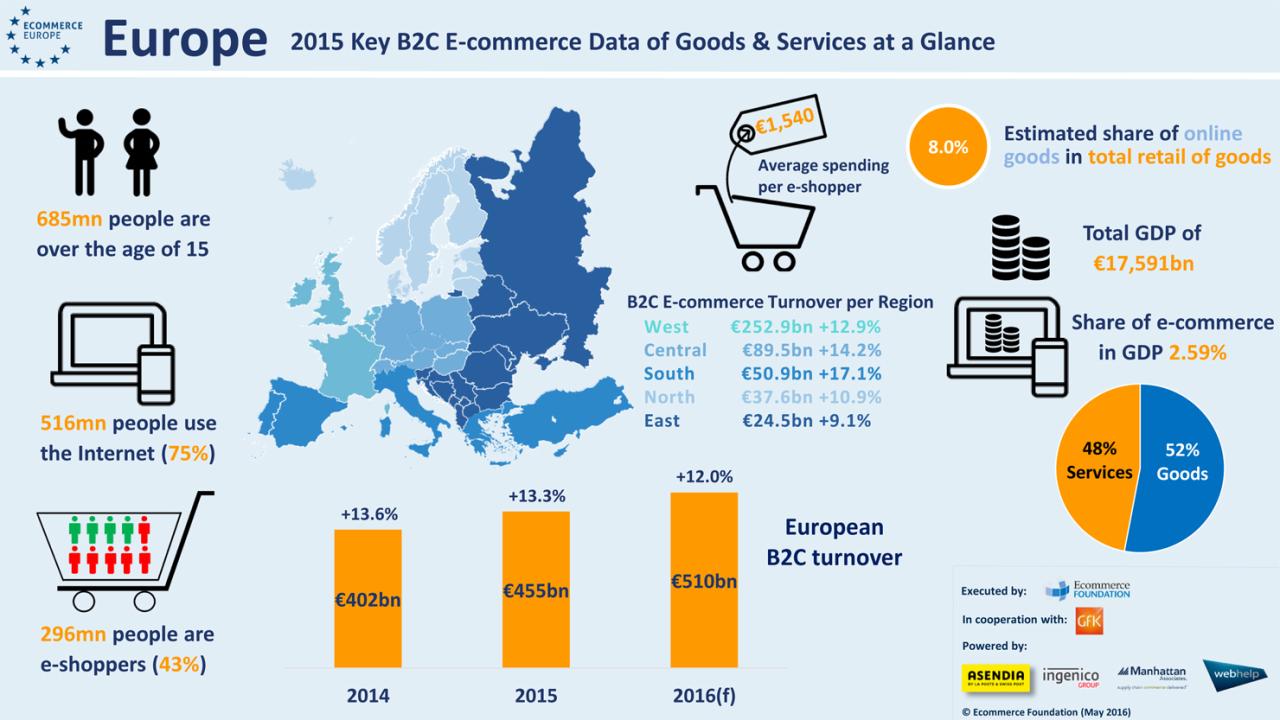
Consumer trends in Europe play a significant role in shaping the success of small sellers in the ecommerce market. By understanding these trends, small sellers can effectively align their offerings with changing consumer preferences to attract and retain customers.
Popular Products and Categories Among European Consumers
European consumers have shown a growing interest in certain product categories, influencing the choices small sellers make in their inventory. Some of the popular products and categories among European consumers include:
- Electronics and gadgets: With the rise of technology, consumers in Europe are increasingly looking for the latest gadgets and electronic devices.
- Fashion and apparel: European consumers have a strong affinity for fashion and are always on the lookout for trendy clothing and accessories.
- Health and wellness products: The health and wellness industry is booming in Europe, with consumers prioritizing self-care and well-being.
- Home and living essentials: As more people spend time at home, there is a growing demand for home decor, kitchen gadgets, and other household items.
Strategies for Small Sellers to Target and Attract the European Consumer Base
Small sellers can adopt various strategies to effectively target and attract the European consumer base by aligning their offerings with changing preferences. Some strategies include:
- Market research: Conduct thorough market research to understand consumer preferences and tailor your product offerings accordingly.
- Personalization: Offer personalized shopping experiences to European consumers to enhance customer satisfaction and loyalty.
- Omni-channel presence: Establish a strong omni-channel presence to reach consumers through multiple touchpoints, including online marketplaces and social media platforms.
- Customer service: Provide excellent customer service to build trust and credibility with European consumers, leading to repeat business and positive word-of-mouth referrals.
Wrap-Up
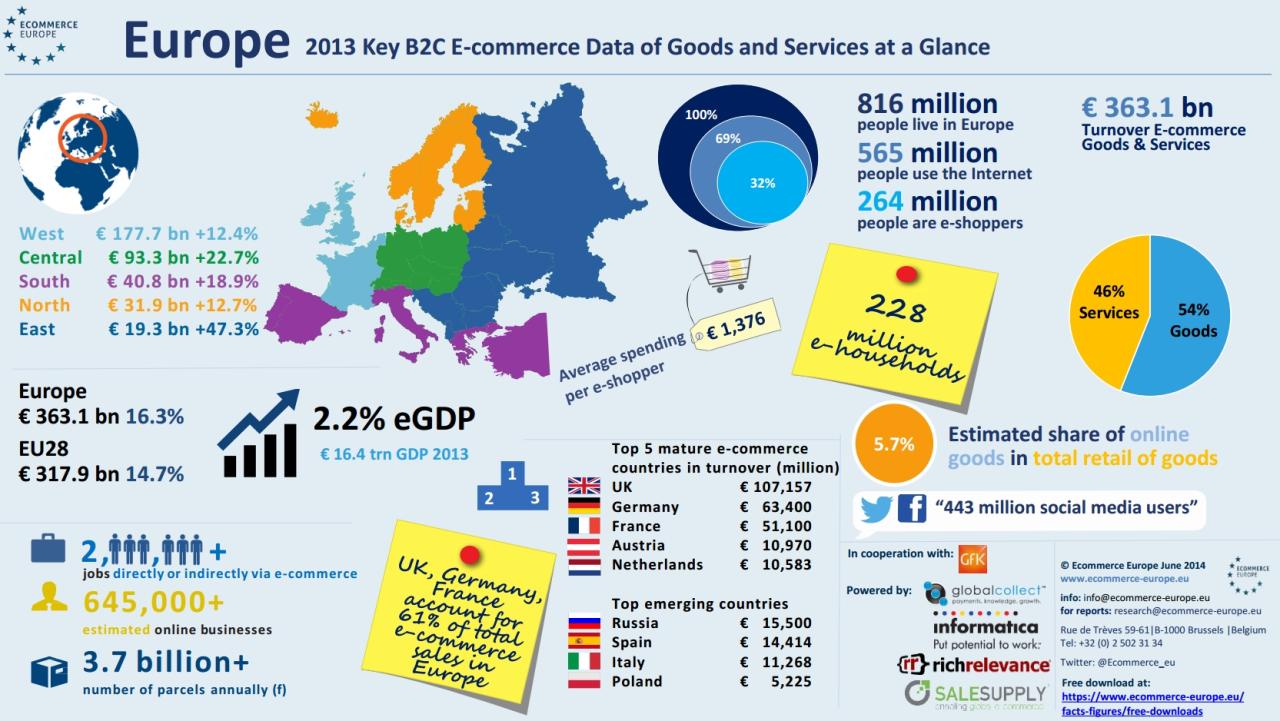
In conclusion, the growth of ecommerce in Europe presents a mixed bag of challenges and opportunities for small sellers. By embracing technology, understanding consumer trends, and staying agile in the face of competition, small sellers can carve out a successful niche in this evolving market.
General Inquiries
What are some common challenges small sellers face in the European ecommerce market?
Common challenges include fierce competition, navigating complex regulations, and establishing trust with consumers in a crowded marketplace.
How can small sellers overcome the challenges they face in Europe compared to other regions?
Adapting to local preferences, leveraging innovative technologies, and offering exceptional customer service can help small sellers stand out in the European market.
What role does technology play in helping small sellers thrive in the European ecommerce landscape?
Technology enables small sellers to streamline operations, reach a wider audience, and enhance customer experiences, ultimately boosting their competitiveness in the market.

